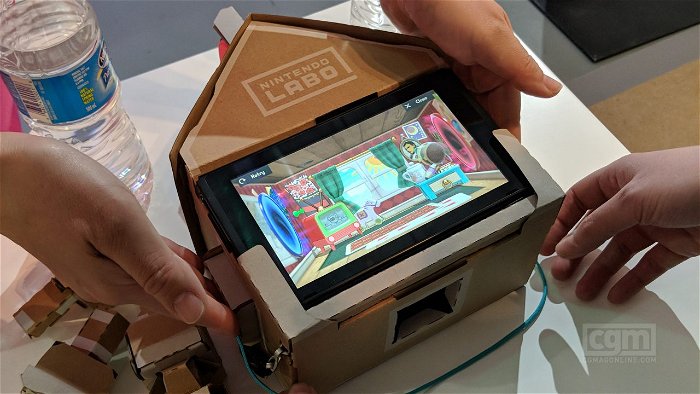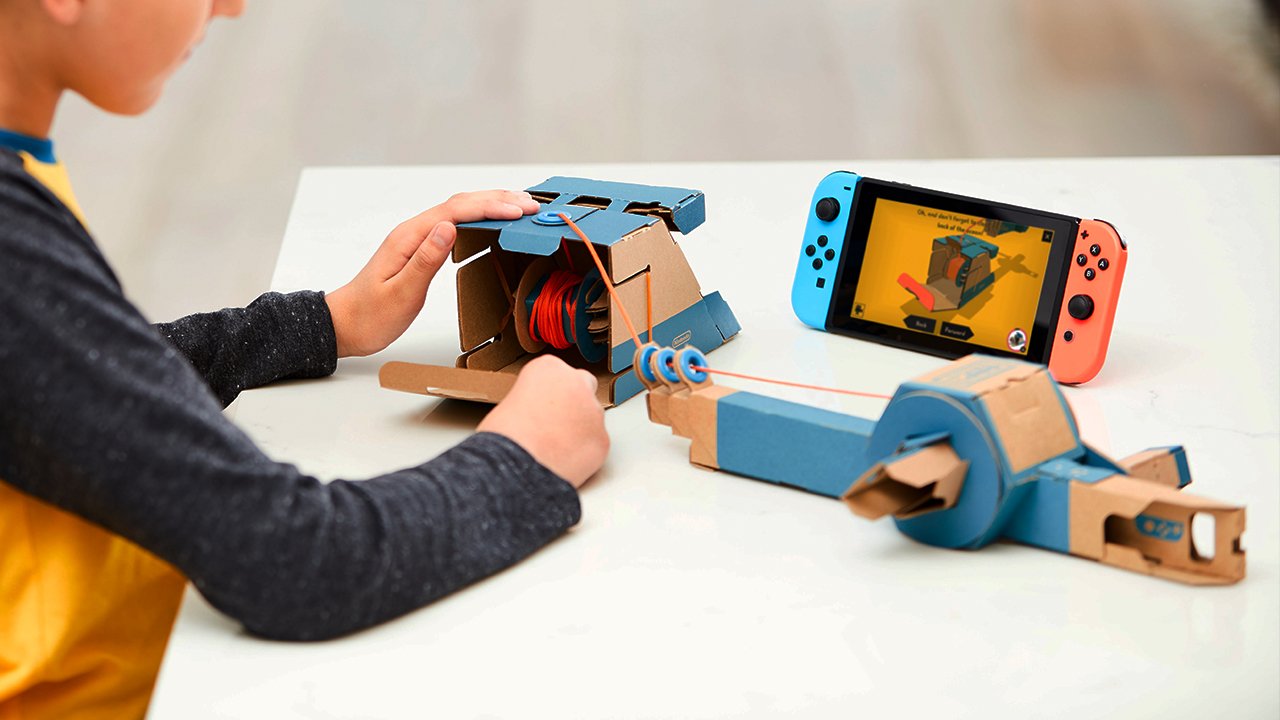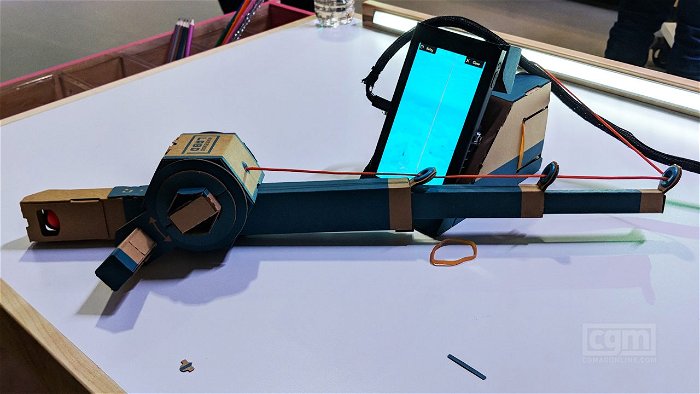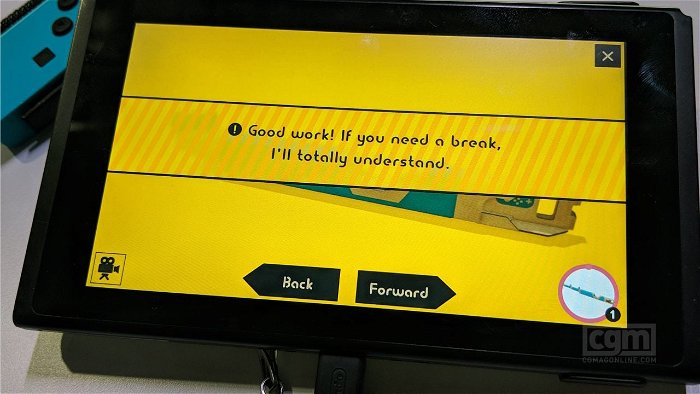It’s only natural that when a successful consoles come out, there is an abundance of peripherals and add-ons that come in tow. I mean, we’ve got a plethora of VR and Mixed Reality offerings from Sony and Microsoft.
And then we have Nintendo, who clearly learned their lesson from the VR craze of the 80s and 90s. No, folks: Nintendo doesn’t want to dream about a cyberpunk-inspired future where every home is equipped with its very own holodeck. No, ma’am. They want us to play with cardboard. And so, we have the Nintendo Labo.
Announced this year during Nintendo’s January Mini-Direct, Labo comes in the form of kits that hold parts, the base game, and Toy-Con cardboard sheets that can be assembled to build speciality controllers that work with your Nintendo Switch. The Variety pack comes with all the tool to make Toy-Con RC Cars (a cardboard version of a bristlebot), Toy-Con Fishing Rod, Toy-Con House, Toy-Con Motor Bike, and Toy-Con Piano. For a little bit extra, there’s also the Toy-Con Robot Kit, with all the parts you need to turn you or a loved one into a robot (okay, it’s more like a mech, but I’ll get into the subtle nuances of robot vs. mech in a bit).
I had a chance to try out a couple of things from the Labo Toy-Con Variety pack: the RC Car and the Fishing Rod. The RC car was probably the most simple to assemble in the Nintendo Labo arsenal, composed of about four pieces that must be folded into the correct shape, fitting all the correct tabs in all the correct slots. At the end of it, the Joy-Cons are fitted into the assigned spaces on the Toy-Con RC Car, and it was time to take the car out for a spin…or rather a rumble. Through the Labo software, you can make your “car” drive around a flat surface rather responsively.
There’s an option to use the RC Car as a remote camera that casts a video on the screen of the Switch, leaving a lot of room for the inevitable shenanigans to be had. As the kit comes with a second car for you to make, you can race your cars or battle them through various mini-games in the app, provided you have a second Switch. And for those who want to experiment with frequency, there’s a manual option that allows you to change the frequency of vibration output to each of the Joy-Cons in the Toy-Con, controlling each side independently. Even though it’s a very simple toy, Nintendo did a great job ensuring that there was plenty to explore once the maker part was done.

Now for the Fishing Rod. This one had a *few* more steps than the RC car. There were many moving parts that required precise folds, grommets that easily snapped into place, a “fishing line” to string, a dock for the switch, and a reel to reel when you made your catch. Despite its complexity, it was brilliantly designed and as long as the very intuitive instructions were followed closely and the folds and tabs were executed carefully, you end up with a very functional fishing rod, complete with reel weight to give it that realistic fishing feel while you catch the colourful fish on the screen of your switch.
“As skeptical as I was when the Nintendo Labo was announced, after having a chance to sit down and play with it, I can see that this direction is a good one with a great start.”
There is the Robot Pack, although I didn’t get a chance to assemble this one for those looking for even more of a challenge. The Toy-Con kit makes a cardboard backpack and visor kit that makes players look a little like the riders inside the Jaegers from Pacific Rim. Once assembled, players control and on-screen “robot” (Nintendo, the person is controlling the giant metal suit. This is not a robot, this is obviously a Mech), through a series of pulleys that are gripped in their hands and looped onto their feet. Throughout the game, players can ravage the city like a Nintendo-ized Jet Jaguar, or transform and race around the world in the form of a jet-bot. If the visor is worn, the perspective moves from third-person to first-person, really adding to the immersion of the experience. Sounds simple enough, but honestly, it had me at transform into a jet.

The software with the Labo utilizes a great tutorial that splices clips of animated instructions together. Each of the steps rotates the current piece you’re working with, which is great for those who need a little help with their spatial awareness. A press and stretch of the forward or backward arrow will advance the instructions at the desired speed without the fear of accidentally bumping the instructions forward. For some of the more advanced projects, Nintendo built in suggested “break times” for its younger audience to prevent cardboard-ripping levels of frustration. One thing I really was missing was a set of static instructions à la Ikea manual for those of us who would rather work from that. But, that’s a minor annoyance more than anything as the step by step instructions are clear and thorough, and easily advanced at the end of each step.
As this is a cardboard toy, the obvious concern on everyone’s mind was durability. Dear reader, I pride myself on my ability to break the unbreakable. Aside from the odd thinly shaped tab that I was able to bend in places aside from the scored lines, I was hard-pressed actually to rip the material used. Each of the kits also fits together very securely with minimal use of fasteners (save for a few on the Fishing Rod and Robot) or adhesives that would take quite some effort to undo, so these Toy-Cons were relatively durable. That being said, at the event where CGMagazine was able to try the Nintendo Labo kits out, completed samples of the Variety Pack and Robot Pack were available to try out. After about 20 minutes of use, I did notice that some of the keys on the keyboard Toy-Con were starting to come undone. I mean, this is a small problem easily rectified with a piece of tape, but still, something to note, especially if you’re thinking of getting this someone a bit younger.
For any parents thinking to buy the Nintendo Labo kits for their little one, I am a little concerned with the age rating for the Labo, as the suggested bottom age is six years old. For this concern, I’m not talking about that kid who was building toothpick to-scale models of the Eiffel Tower at four years of age. This is a great toy for them. I’m thinking about the average six-year-old who is struggling to develop their fine motor skills. As fine motor skills are a must, the majority of the kits (basically, and from what I could tell from the demo, every kit but the RC Car) will undoubtedly require adult assistance. Because of this, there is very little room for success while working completely independently for many kids that age, which is essential to problem-solving. Now I’m a big proponent when it comes to learning by struggling through a problem, so because of that, I do hope that Nintendo eventually releases a beginner kit of sorts so that the barrier to success is scaffolded a bit for the majority of the younger audience. In act, it would be an incredible learning tool for those children if this were to happen.
And speaking of which, from an educational standpoint, I can see a lot of potential with the Nintendo Labo kits. For one, this is a really engaging way for kids to develop and refine those fine motor skills, with appropriate assistance of course. And they are some excellent problem-solving tools and each kit comes with some way to explore the technology beyond the assembly of each Toy-Con. Each Nintendo Labo kit comes with the Toy-Con garage, a program within the software that opens up an advanced setting that allows for some simple, basic programming operations that work through a command input – result output function.

This lends itself to exploring and experimenting with a basic programming command structure, such as turning on the Switch screen with the shake of the Joy-Con, or map sounds to the buttons and joysticks. It’s exciting to see so many developers coming up with ways to support STEM education at a young age, and with Nintendo being probably the most accessible to young children than any other developer, I’m glad to see that they are catching up to STEM education leaders like Microsoft, who have used games such as Minecraft to create programming to be used as a science and technology teaching tool with many school boards, and and Ubisoft who has been a big proponent of this with their CODEX initiative. Nintendo has an amazing opportunity to develop a curriculum that utilizes the Labo’s exploratory and experimental properties to serve this purpose.
As sceptical as I was when the Nintendo Labo was announced, after having a chance to sit down and play with it, I can see that this direction is a good one with a great start. I only hope that Nintendo doesn’t stop here and really delves into the potential that the Labo brings. I can see hours of fun and learning to be had for the price of most AAA videogames ($89.99 CAD for the Variety Pack and $99.99 for the Robot Pack). I’m not saying this will be the Lego for this generation of kids, but it certainly has the chance of bringing itself to that level. I suppose we’ll find out after its release on April 20th.






